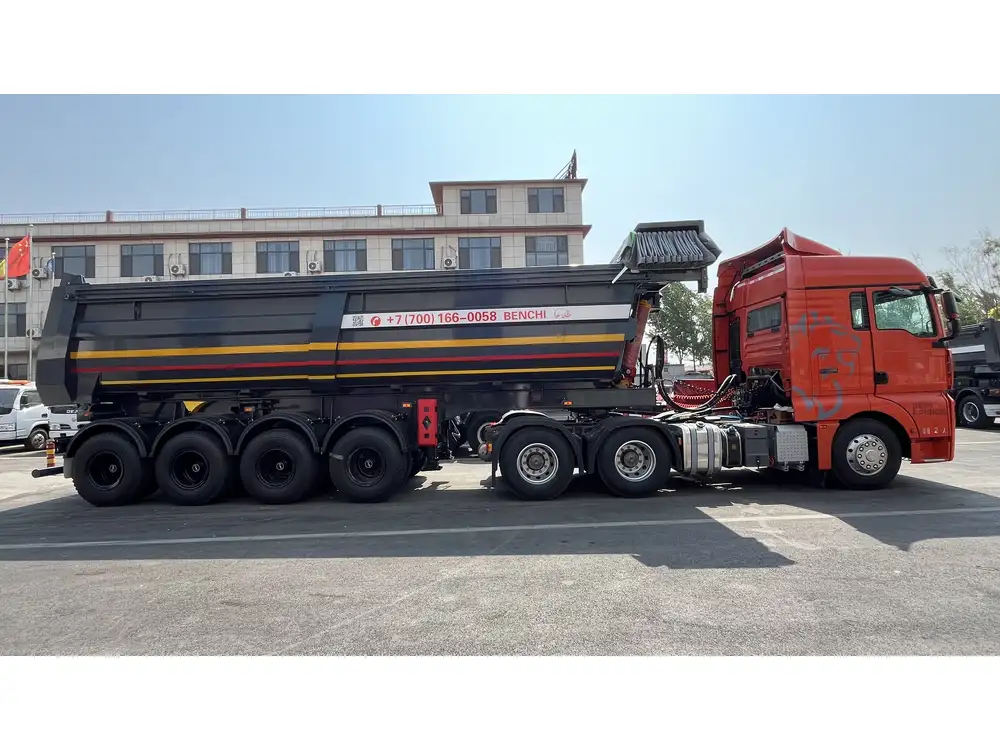In the realm of transportation logistics, flatbed trailers play an indispensable role. They are the unsung heroes of freight movement, capable of carrying a wide range of goods—both standardized and oversized. When it comes to understanding flatbed trailers, one fundamental aspect stands out: their length. This article dives deep into the standard lengths of flatbed trailers, exploring their applications, regulations, and significant considerations that manufacturers and transporters must account for.
Overview of Flatbed Trailers
Flatbed trailers are versatile vehicles characterized by their level platform with no sides or roof. This unique design allows for easy loading and unloading from any angle, accommodating various cargo types, from equipment to construction materials. They come in several lengths, which can affect their usability, legality, and operational efficiency.
Common Types of Flatbed Trailers
Standard Flatbed Trailers:
- Length: Generally range from 20 to 53 feet.
- Use: Ideal for standard loads and shipping.
Step Deck (Drop Deck) Trailers:
- Length: Usually 48 to 53 feet.
- Use: Suitable for taller loads; the lower deck permits transporting oversized cargo without exceeding height restrictions.
Double Drop Flatbed Trailers:
- Length: Typically 48 to 53 feet, with additional length for the lower deck.
- Use: Designed for heavy and oversized loads such as machinery or beams.
Extendable Flatbed Trailers:
- Length: Can extend from 48 to 60 feet or more.
- Use: Perfect for longer loads that exceed standard trailer lengths.

Standard Lengths and Their Significance
The most common flatbed trailer lengths are dictated largely by federal regulations and industry standards. Below is a summary of the standard lengths based on the type of flatbed trailer.
| Flatbed Type | Typical Lengths (Feet) | Common Uses |
|---|---|---|
| Standard Flatbed | 20 to 53 | General freight, construction materials |
| Step Deck | 48 to 53 | Oversized loads, such as machinery |
| Double Drop | 48 to 53 | Heavy equipment, long beams |
| Extendable | 48 to 60+ | Unusually long freight |
Legal Regulations Affecting Flatbed Trailer Length
Understanding the legal dimensions and weight limits of flatbed trailers is pivotal for operators to avoid penalties and ensure safe transportation. Different states have specific guidelines on trailer lengths under various conditions, which include:
- Interstate Highways: The Federal Motor Carrier Safety Administration (FMCSA) generally allows trailers up to 53 feet in length.
- Intrastate Regulations: Each state may have different allowances. Some may permit longer trailers in certain conditions or require special permits for oversized loads.
The Importance of Choosing the Right Length
Choosing the right flatbed trailer length is crucial for optimizing transportation operations. Factors influencing this decision may include:
- Type of Cargo: The dimensions and weight of the cargo substantially dictate the suitable flatbed length.
- Loading and Unloading Requirements: Accessibility for loading and unloading affects the trailer’s placement and design.
- Route Considerations: The route taken for delivery may have restrictions on trailer lengths, turning radii, and bridge heights.

Calculating Load Dimensions
It is essential for transporters to accurately calculate the dimensions of their loads before selecting a flatbed trailer. Here’s how:
- Measure the load: Length, width, height, and weight.
- Account for clearance: Both the height of the load and the load on the trailer should be checked against height restrictions on the route.
- Consider balancing: Proper weight distribution ensures safety and compliance with axle weight limits.
Maintenance Considerations for Flatbed Trailers
Maintaining the trailer’s structure and functionality is essential to ensure longevity and efficiency. Key maintenance considerations include:
- Regular Inspections: Periodic checks for structural integrity, including the frame, flooring, and tie-down systems.
- Tire Management: Keeping tires inflated to the correct pressure and checking for wear.
- Brake System Checks: Ensuring braking systems are functional helps in safe operation.
Enhancing Efficiency with Proper Trailer Length
Selecting the correct length for flatbed trailers can significantly enhance transport efficiency. Here are some benefits:
- Maximizing Cargo Space: Longer trailers can accommodate larger loads, thus reducing the number of trips.
- Fuel Efficiency: Optimizing load size can lead to fewer runs and lower fuel consumption.
- Reduced Loading Times: Proper lengths reduce the need for multiple trips, expediting loading and unloading phases.

Challenges in Flatbed Trailer Length Selection
While determining the appropriate trailer length seems straightforward, numerous challenges may arise:
- Mismatch with Standard Road Routes: Not all roads can accommodate longer trailers. Navigational issues include narrow roads, low bridges, and busy urban areas.
- Changing Cargo Specifications: In logistics, cargo needs can evolve rapidly. Selecting a trailer length may require adjustments in order to meet unexpected specifications.
- Balancing Versatility and Compliance: Many operators seek versatility in their fleet while adhering to strict compliance with state laws on trailer length.
Conclusion
The standard length of a flatbed trailer is a vital component in ensuring successful transportation logistics. Whether considering a standard, step deck, double drop, or extendable flatbed, understanding the implications of length can lead to more efficient operations, reduced costs, and safer journeys. Manufacturers like us strive to produce trailers that meet the diverse needs of our clients, allowing for optimal load management and compliance with ever-changing regulations. As the logistics landscape continues to evolve, staying informed on flatbed trailer standards and practices becomes increasingly critical for operators and manufacturers alike.
In selecting the right flatbed trailer length, consideration of your cargo type, loading requirements, and applicable regulations is essential for maximizing operational efficiency and achieving seamless transportation logistics.



